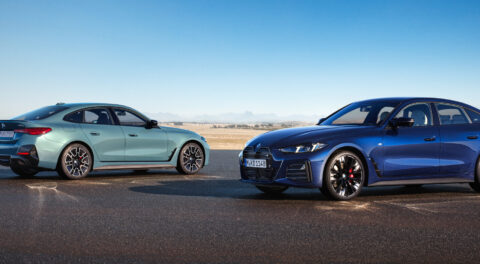The E36 M3 was the car that truly put BMW M on the map in the U.S. Yes, the E30 M3 and E28 M5 preceded it and established an all important beachhead, and the E34 M5 was the last hand-assembled M car, but the E36 M3 sold in numbers previously thought to be unrealistic for the sub-brand, and made it unequivocally clear that Bob Roemer’s letter writing campaign was indeed onto something.
Twenty five years later though, the sting of the American-spec E36 M3 being sold with a watered-down engine compared with that which was sold globally doesn’t seem to have been fully assuaged. The S50B30US and the S52B32 that succeeded it after just one model year are great engines on their own, with more than enough power and torque to allow the second-generation M3 to excel where it matters, but without the exotic, high-revving cylinder head of the rest-of-world specification cars, something has always been missing, even though Car and Driver suggested there was very little between the cars in terms of performance back in 1994.
The S50B32 fitted in the rest-of-world E36 M3 starting in 1995 used a cylinder head design not unlike that which is found in the McLaren F1’s BMW V12, allowing the engine to produce just over 100 horsepower per liter of displacement—something the U.S. would have to wait until the E46 M3 to receive a version of.
Thanks to the choice to use of a less expensive engine that developed torque earlier in the rev range, the American E36 M3 earned a reputation akin to something less than a full M car among the uninitiated, but it usually only took one drive to dispel any misgivings about the car’s capability. In recent years, the U.S.-spec E36 M3 has genuinely come into its own, shedding the notion that it was ever a red-headed stepchild, with valuations for low-mileage, well-kept, and unmodified examples climbing significantly.
There are two variants of the E36 M3 that stand above the rest though, and in a new video by Road & Track, Senior Reporter Chris Perkins talks with Tom Plucinsky, Roundel columnist and the department head of BMW Group product and technology communications, about the E36 M3 Lightweight (LTW) and the not-sold-here M3 GT.
The M3 GT was a homologation special to allow the model to race in the FIA GT series. Its equipment, which includes a specialized S50B30 engine, British Racing Green paint, Mexico Green leather inserts for the seats, aluminum doors, forged lightweight wheels, and carbon-fiber interior trim among more, along with a production run that totaled just 350 units made in 1995 (with an additional six pre-production prototypes made in December of 1994), make it obvious why the car is so desirable among other M3 models.
The M3 LTW, on the other hand, relies on the initial S50B30US power plant used in the States, but with significant changes elsewhere including but not limited to aluminum body panels, the deletion of air conditioning and other amenities and creature comforts, and an iconic look thanks to Alpine White III paint contrasted by checkered flags in the M colors. The process of adding lightness to the E36 M3 resulted in an almost complete transformation of how it behaved in LTW form, and thanks to production which totaled approximately 125 units, they’ve always been sought after and unique. There’s also the story of their rather unique production process, in which PTG (Performance Technology Group) played an integral role, but that’s a story for another article.—Alex Tock
[Photo courtesy David Rose. Video courtesy Road & Track.]





















